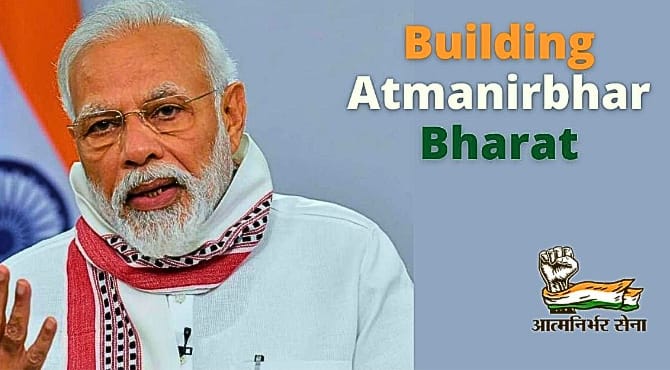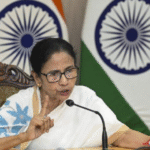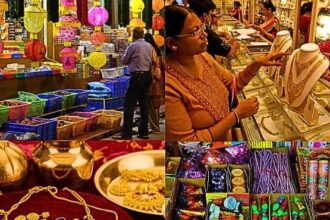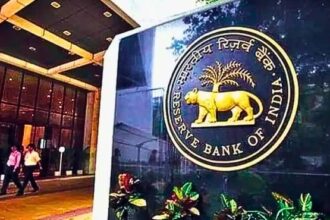Stating “swadeshi,” Prime Minister Narendra Modi not only calls for economic nationalism but also re-ignites the very old fire that gave power to India’s freedom movement. Swadeshi in these days is still about wearing khadi and buying local goods; however, it is a new economic movement that has the objective to empower the rural areas, to make them self-reliant, and to include the country’s development with the pride of their culture. Khadi and indigenous products are the perfect examples that individual self-sufficiency is not separation, but rather power that is derived from the combination of all the hands of people of Bharat.
The symbolism behind khadi and swadeshi
For Modi, khadi is not only a fabric—it is the fabric of India’s identity. The rough cotton, which was made into a weapon of protest during the time of Mahatma Gandhi, is now a symbol of pride, labor, and eco-friendliness. Modi has been saying over and over that Khadi is not merely a textile, but a movement that links the spinner to the ruler, the artisan to the citizen. His phrase, “Khadi for nation, khadi for fashion,” is an indication of the combination of past and present—showing how the old can be blended with the new to maintain the traditional craft while at the same time being fashionable worldwide.
In Modi’s plan, Swadeshi is very close to the heart but at the same time it is a very rational idea. It feeds the soul of Bharat Mata by seeing and appreciating the unrecognised hands that make the daily commodities—potters shaping lamps, weavers fabricating cloth, and artisans making metal or wood. By going for Swadeshi, each and every citizen becomes a part of this silent revolution—turning consumption into contribution. Thus, the festival of lights becomes more than just an event for lighting houses, it is an opportunity to bring light into people’s lives.
The economic groundwork of a swadeshi Bharat
On the economic front, the focus that Modi has put on Swadeshi is very much in line with India’s long-term goal of atmanirbharta, or self-reliance. Global economic crises such as the pandemic or the recent geopolitical conflicts have shown the risks that come from too much dependence on imports. Swadeshi achieves security as well as environmental-friendly growth through the revival of local production and small-scale industries.
The results are clear and visible. The Indian traders during Diwali 2025 managed to achieve a turnover of more than Rs 5.40 lakh crore recording a 25% increase as compared to the previous year. Approximately 87% of the consumers made a deliberate choice to buy Indian products-made goods, which is a complete reversal of the trend that was dominated by foreign imports. The current trend has led to a large number of jobs both seasonal and permanent, created in rural and small-town areas of Bharat, thereby increasing purchasing power.
The central government schemes such as the ‘Kumhar Empowerment Programme, ‘MSME handicraft promotion, and rural employment missions have all been energised by the call for Swadeshi. The khadi and Village Industries Commission (KVIC) is a case in point for this expansion—going up from Rs 3,154 crore in 2014 to Rs 1.71 lakh crore in 2025. A little over 10 lakh new jobs have been generated, the majority of which have been by women, the rural artisans, and the marginalized communities. This turnaround sends a message that Swadeshi is not just a sentimental economic theory but a valid tool for inclusive development.
Modi’s reason: empowerment through self-reliance
The philosophy of antyodaya—lifting the poorest ones first is what underlines Modi’s Swadeshi calling. Modi, taking the idea of Pandit Deendayal Upadhyaya as his inspiration, pictures an economy of which each citizen is a shareholder in progress. By bringing together the spirit of Gandhian living and Indian business, he tries to create new economic structures that are based on the dignity of labor and social morality – being responsible towards society.
According to Swadeshi, Modi considering it not a concept for the nation’s self but rather as an outward flow of national capacity. Two initiatives ‘Make in India’ and ‘Make for the World’ are just different aspects of the same thing. As India is making its industries strong at home, it is not only able to lessen its need for foreign goods but is also able to increase its export capacity, thus, turning Bharat into a global manufacturing hub. The ultimate objective is to turn every purchase into a patriotic deed and every worker into a national wealth generator.
Khadi to Modi is an excellent example of this concept—it connects the new consumer with the old producer. When an Indian youngster chooses to wear Khadi today, it is not only a fashion decision but also an endorsement of national pride and continuity.
The revival of Khadi and Swadeshi under the leadership of Narendra Modi is an economic and moral renaissance at the same time. It does not only bring back the traditional Indian craftsmanship but also gives power to its rural backbone and, at the same time, strengthens its economic independence. It is much more than a campaign, it is a cultural call—a reminder that progress with its roots in self-respect lasts longer than prosperity borrowed from others.
Through the use of lamps made by Indian hands and through wearing of Khadi which is woven by Indian looms, the nation is, in a very symbolic way, illuminating the path to a future where economic strength and cultural identity are interlinked. Therefore, Swadeshi is not only Modi’s policy but also Bharat’s promise to itself: to be the light that guides its own way.









